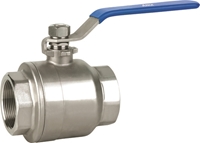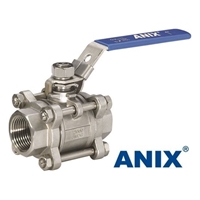Check out Anix's line of valves in the product pages above!

Valves journey from the manufacturing facility to the buyer is often an overlooked issue. The worst thing is that this problem more often than not becomes obvious at the last moment when the valve needs to be shipped. Then there are always some last minute solutions and hacking to load it on to a truck and ship it. The results are non-adequate solutions that can compromise the safety and risk damage. Transporting your creation to the desired place is also a part of valve design.
There are two problems to solve here:
1. How to move the valve around the facility and load it onto a truck / crate / shipping container and
2. How to secure the valve in the truck / crate / shipping container.
Let’s start with the first problem, transporting the valve around the facility.
Depending on the size and weight I can think of three possible solutions:
Small valves – make a wooden crate
Wooden crates are often used because the wood is readily available and easy to process. Also it’s softer then all metals so it cannot damage the goods. Crates obviously need to be large enough to contain the valve but also need to one additional feature. On the bottom of the crate wooden risers need to be added so that the crate can be easily lifted with a fork lift. These risers also help when lifting the valve by hand. The height of the risers is determined by the height of the forks on the forklift. Check out the download section bellow for the resource on how to design the crates.
Wooden crate design
Medium valve size – provide Lifting Eye bolts
Lifting Eye Bolt
Eye bolts are designed to be anchor points for securing the object. Eye bolts provide a thread on one side and a loop for fastening on the other. This method for securing has the benefits as the eye bolt can be removed after transporting. Through the loop, you can insert tying straps or you can insert a rod through two eye loops to help with the lifting with a lift. Again look at the download for additional resources and carrying loads.
Large valves – provide a spot to insert the forklifts forks
The first thing that you need to consider is the size of the valve and the weight of the valve. Weight of the valve is important because you will need a forklift with a larger lifting capasity in order to lift the valve. Forklifts with larger lifting capacity have larger forks so you need to put that into the consideration. I have tried to find out what are some of the standard sizes for forks regarding the lifting capacity but I was not able to find any. The best place to look for these information will be the forklift’s spec sheets.
The size of the valve is important because the center of mass of the valve needs to be located in the middle of the forks. If the valve is too big, so that the forks cannot reach the center of the mass the lift will not be possible. One way around this is to mount fork extensions on the forks. When designing a spot for the forks you need to consider the maximum width that the forks can expand and as mentioned the size of the forks themselves. The easiest thing to do is to sketch out these dimensions like this:
Forks sketch
Then design the openings for the forks to be bigger at least 20mm (~1″) in both dimensions. The width of forks opening with should be smaller than the forklift’s maximum, but try to keep it as wide as possible for stability.
A good idea is to provide a U beam for the forks. The beam will guide the forks inside the valve. Also weld a plate on the end of the beam so that the forks have a stop.
If the valve is high enough you can provide 2 L brackets just to keep the direction for the forks.

Forklift spots recap:
- Determent the size of the forklift that you would need to move the valve
- Determent the size of the forks with or without extensions and the width that the forks can expand to
- Find the U beam that has internal profile dimensions at least 10-20mm larger than the forks.
- Mount the two U beams inside the valve as low and as wide as possible
In the part 2 of this mini series we will discuss the basics of tying the load in the shipping vehicle of transportation. You do not want to see something like this happen to you
